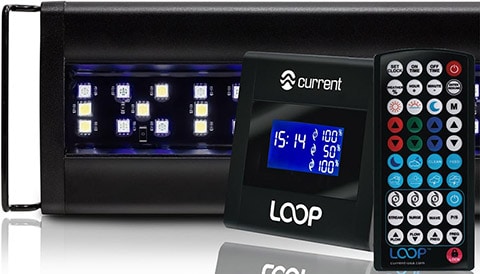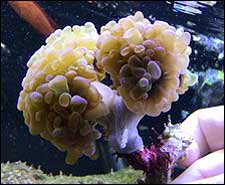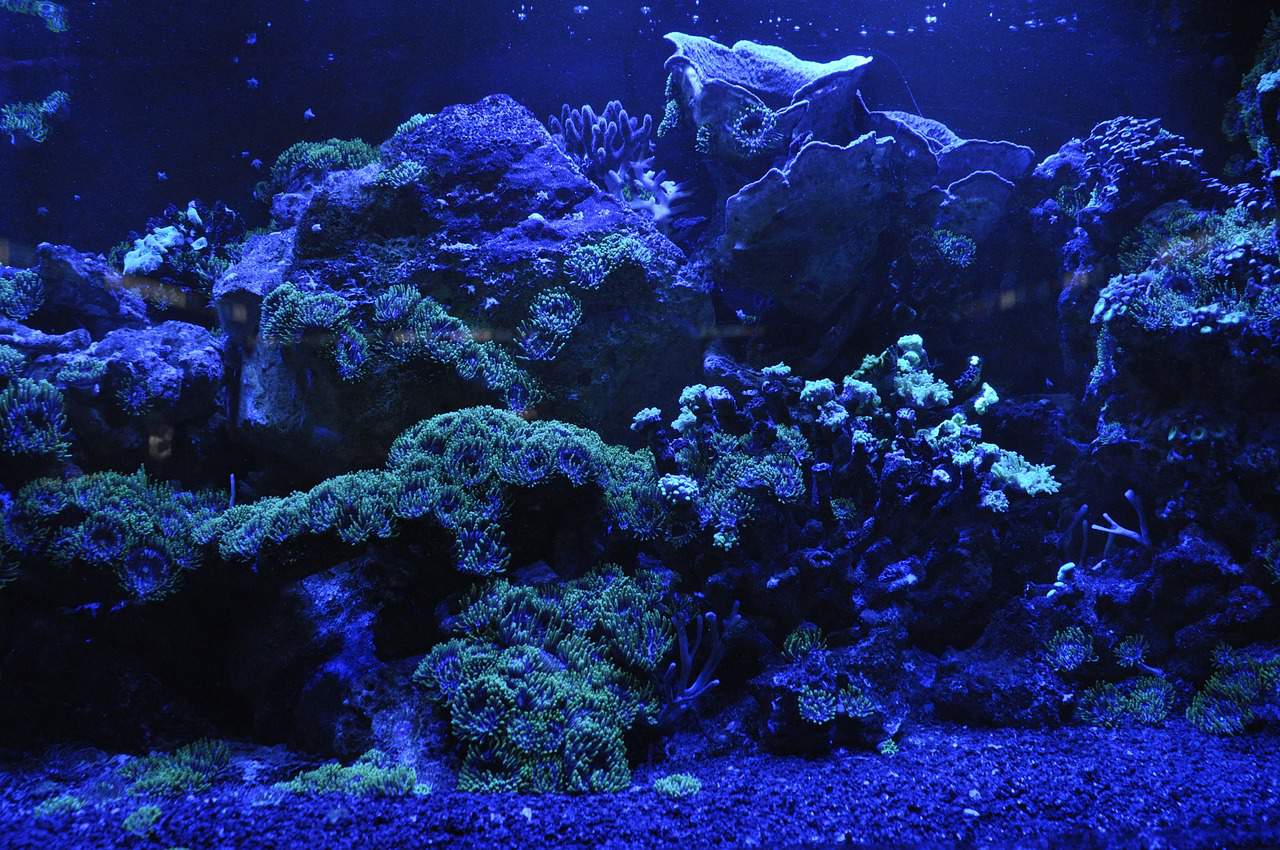Marineland vs. Current USA LED “reef” fixtures!
Like a lot of you, when LED technology came out, I didn’t jump on the bandwagon, primarily due to the infancy of these lights years ago.
I wanted to wait and see it develop; besides, this hobby is expensive enough! I just couldn’t justify buying a light fixture that was more expensive than all the fish, equipment, and live rock combined that I have in my tank! So some of us waited…
These days, prices have come down, but maybe not enough for some of us. As we eagerly watch fixtures come and go, lately, 2 in particular caught my eye and have been sticking around. I thought I would make some phone calls to these two companies to see if either of these lower cost LED fixtures would fit the bill. Most of us don’t mind having our corals more towards the top of the tank anyhow if the trade off is a lower electric bill!
Two popular LED “reef” fixtures
The two I would be comparing, that seem to have the same wattage but differ in price and features, are the Marineland Reef Capable LED Lighting System and the Current USA Orbit Marine LED Aquarium Light, both are the 48-60″ fixture.
Now do not confuse THIS “Orbit” with the HQI (Metal Halide) bulbs, which did get discontinued. The Current USA LED system is in full swing according to the company. I found the lowest prices on two websites which I will disclose below. Let’s get started:
1. Marineland Reef Capable LED Lighting System

This fixture is a 48-60″ with 54 watts (46 white or 10K and 8 blue or 460nm). This price was from Petmountain.com and they were pretty good, in fact, they will match any lower price you find on the web. It has a timer and their website shows a video of how to program the light. This is a 1 watt per LED figure and each of the LEDs has an integrated optic chip that allows the light to spread out at a 120° angle. This fixture has open bulbs with no shielding and is not water-resistant.
Their website states that their par at 12″ for this light is 130 right below the light. Okay, so what does that mean? Should we put higher Par-needing corals CLOSER to the light? Yes, according to Marineland. Once you drift 3″ from the area right below the LED, par drops to 61 par and at 6″ it drops to 21 par. This would be important when it comes to placing corals.
2. Current USA Orbit Marine LED Aquarium Light

This fixture is 48-60″ (46 Watts: 96 Dual Daylight/96 Dual Actinic for 192 LEDs total). It also has a remote control that can make a “fake” thunderstorm among other settings like a pre-programmed schedule or your own, including increasing the blue to make those corals glow. (These features grabbed my attention) These prices I found at Foster and Smith. This is about 1/4 watt PER LED, however each LED is very close to the next one and has a 120 degree lens in each LED (Epistar .25w). This fixture is water resistant.
Current’s website states that their LEDs are 445nm & 460nm blue along with the 8 and 12K daylight. The first 3″ has 400 par, 6″ to 12″ has 120 to 150 par.
Comparison
Both fixtures are emitting about 130 par at the 12″ mark. After speaking to both companies, Current seemed to be much more confident that their light will support LPS, which is the coral that is my test subject. Many websites will state that 1/4 of a watt per LED will NOT support corals, and based on that, Current Marine LED shouldn’t work so well. I decided to see if those claims were true. Thinking logically, I imagined 96 LEDs, each with a 120° angled lens may cover more real estate than 54 LEDs with a 120° angled lens.
With Current, the placements of the lenses makes placing corals a little easier than having to put each one right under each Marineland LED. This is not testing or comparing LUX, only par, so anyone can add their thoughts to help in making a choice.

Results
My sister purchased the Current Orbit Marine LED 48-60″ fixture for my 75 gallon tank. I parked a SINGLE polyp of Frogspawn down about 4 to 6″ below the light fixture itself and 7 months later there are now 4 heads on this coral. (see pictures) My Duncan started out with one single head and after about 2 months has little heads forming all around the base. The coralline algae that was on the base of the Frogspawn, as you can see in the pictures, has grown, showing that the light can support algae. Mind you, my tank is covered with glass and I do not always clean the algae that form on the glass constantly, so the corals may do better with an open top. I love my wrasses and I don’t want any deaths!

Conclusion
While neither of these LED light fixtures will support SPS on their own, and both companies clearly pointed this out, they are stated to support higher light LPS, low light LPS, polyps, most softies and mushrooms. Since LEDs cut your electric bill something fierce if you have a larger tank, some of us are fine passing on the temperamental SPS grouping. Want an anemone, then you may need a little more power.
Another reason I chose the Orbit LED is that Current primarily concentrates on lighting, while Marineland has its fingers in many different products, not giving any one its all, yet makes a decent budget LED. I would, however, like to give the Marineland Light a spin!
Featured Image Credit: KaKnogler, Pixabay
